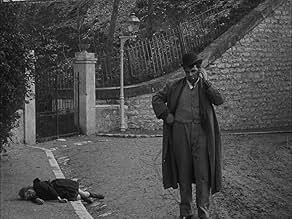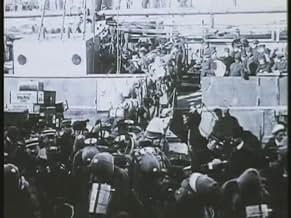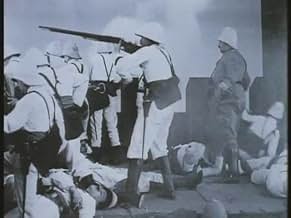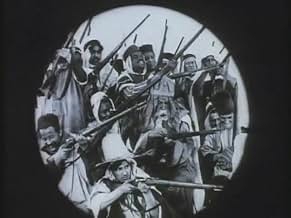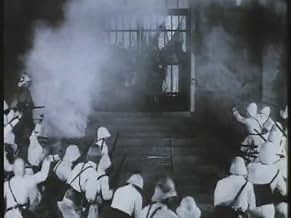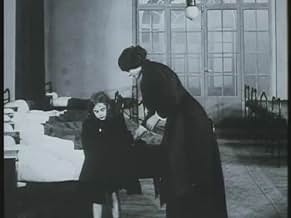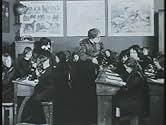Añade un argumento en tu idiomaThe young daughter of an army captain missing in action runs away from school and is kidnapped by Parisian lowlifes. When the kidnapper flees to Nice with the child, the kind-hearted employe... Leer todoThe young daughter of an army captain missing in action runs away from school and is kidnapped by Parisian lowlifes. When the kidnapper flees to Nice with the child, the kind-hearted employee of one of his accomplices sets off in pursuit.The young daughter of an army captain missing in action runs away from school and is kidnapped by Parisian lowlifes. When the kidnapper flees to Nice with the child, the kind-hearted employee of one of his accomplices sets off in pursuit.
Henri Duval
- Jacques de Valen
- (as Henry Duval)
Argumento
¿Sabías que...?
- Pifiasit is suggested that the kidnapper went to a casino in Nice to gamble with the ransom money. However, as the captain was released almost as soon as he had been imprisoned, he would surely have cancelled his cheques for the ransom money, which is the reason the kidnapper gave for tying him up.
- ConexionesFeatured in Cinema Europe: The Other Hollywood: Where It All Began (1995)
Reseña destacada
Let us first establish the situation that existed in 1913. Leaving aside a few curiosities from earlier years (the 1906 Story of the Kelly Gang is not the only one), films of about 50 minutes long only really began to appear in 199 and the only a handful of which the Italian L' Inferno and the Danish Den sorte Dreøm are probably the best. By 1913 such feature-length films had been made almost everywhere in the world although not all survive. In 1912 they included at least one film that was apparently originally two hours long (Romanian as it happens) but it was only in 1913 that the first really significant features began to appear - Atlantis (Denmark), Germinal and L'Enfant de Paris (both France), all three of which are about two hours long, three Italian epics (In hoc signo vinces (In questo segno vincerai), Quo Vadis and Jone ovvero gli ultimi giorni di Pompei, one of two versions in the year, both of which survive, at least six US film, Ince's The Battle of Gettysburg, sadly lost but almost certainly anticipating many of the things that would later be used by Grfifith in A Birth of a Nation, Lime Kiln Field Day, most remarkably of all starring black comedian Bert Williams, sadly never finished, Traffic in Souls, a reworking of earlier Danish films, which survives in a truncated version and The Trap starring Lon Chaney and rather feeble versions of Ivanhoe and The Deerslayer. Other films of over an hour include the excellent Ingeborg Holm (Sweish),, several Austrian and German films including the first version of Der Student von Prag, a rather poor British version of Hamlet, a splendid Italian absurdist comedy, Le avventure straordinarissime di Saturnino Farandola and at least two Russian films, the excellent Sumerki zhenskoi dushi (just under 50 minutes) and rather surprisingly a full-length documentary about the life of the Jews in Palestine.
So 1913 was not just any year (and there is certainly no excuse for the usual bleat of "good for 1913"); it was the first really important year for full-length feature films and all round the world - (Dhundiraj Govind Phalke's Raja Harischindra appeared the same year in India although not much survives its original length is a little uncertain - film-makers puleld out the stops to celebrate the fact.
1914 (the year of the wonderful Cabiria and of the classic Feuillade serial Fantômas) was another great year, so, coming out in 1915, The Birth of a Nation was no kind of pioneer but was well back in the field even as far as the US itself was concerned (Griffith himself had already made two other not particularly distinguished features by that time and DeMille had already made eleven features in 1914 alone, not all of which survive, and would make a further fourteen in 1915 including one of his career-best films, The Cheat). By 1915, although Birth of a Nation is particularly long, full-length features were already commonplace. The British film, Jane Shore, produced the same year by William Barker, founder of Ealing Studios, may be a less good film but, with a cast of thousands, it is no less elaborate or ambitious. This late arrival was not, it is true, so much Griffith's own fault as that of the wretched Motion Picture Patents Company which held back the companies that formed part of it including Biograph for whom Griffith then worked.
Perret is always an interesting film-maker with a distinctive style of his own. During the period 1912-1914 he might even be said to have invented a genre of "epistolary" film where letters, diary-entries and a variety of other documents play an important role, a kind of story-telling by visual collage. The style owes much to Feuillade, who frequently uses the same device, but was developed more systematically and deliberately by Perret (Le Roman d'un mousse 1914, for instance, uses the epistolary style for the first half of the film but not the second). It was a genre that would in effect begin and end with Perret but is, nevertheless, as valid a way of making a film as any other.
Follow any of the "documents" displayed on the screen in the course of this film and you will find that they invite to a kind of reflection parallel to the action of the film itself and often related to a quite subtle vein of social critique that runs through it. The screen-display of banknotes for instance (and the ransom-cheque) seem at first unnecessary but in fact invite a reflection on the relative value of money to the various characters concerned. Even watching the English version, you would need French to notice that the newspaper article next to the report of Valen's search for his daughter, and seemingly relevant to nothing, is in fact about the increase of military service from two to three years and relates to another subterranean theme of the film - Or watch carefully the evolution of the "pneumatque" (not a telegram) that Le Boscs sends to de Valen..... It is all very clever stuff.
L'Enfant de Paris is not, I think, as successful as the excellent 40-minute thriller Le Mystère des roches de Kador which Perret had made in 1912 and there were several better films made in 1913 but it is witness to a very original form of film-making..
So 1913 was not just any year (and there is certainly no excuse for the usual bleat of "good for 1913"); it was the first really important year for full-length feature films and all round the world - (Dhundiraj Govind Phalke's Raja Harischindra appeared the same year in India although not much survives its original length is a little uncertain - film-makers puleld out the stops to celebrate the fact.
1914 (the year of the wonderful Cabiria and of the classic Feuillade serial Fantômas) was another great year, so, coming out in 1915, The Birth of a Nation was no kind of pioneer but was well back in the field even as far as the US itself was concerned (Griffith himself had already made two other not particularly distinguished features by that time and DeMille had already made eleven features in 1914 alone, not all of which survive, and would make a further fourteen in 1915 including one of his career-best films, The Cheat). By 1915, although Birth of a Nation is particularly long, full-length features were already commonplace. The British film, Jane Shore, produced the same year by William Barker, founder of Ealing Studios, may be a less good film but, with a cast of thousands, it is no less elaborate or ambitious. This late arrival was not, it is true, so much Griffith's own fault as that of the wretched Motion Picture Patents Company which held back the companies that formed part of it including Biograph for whom Griffith then worked.
Perret is always an interesting film-maker with a distinctive style of his own. During the period 1912-1914 he might even be said to have invented a genre of "epistolary" film where letters, diary-entries and a variety of other documents play an important role, a kind of story-telling by visual collage. The style owes much to Feuillade, who frequently uses the same device, but was developed more systematically and deliberately by Perret (Le Roman d'un mousse 1914, for instance, uses the epistolary style for the first half of the film but not the second). It was a genre that would in effect begin and end with Perret but is, nevertheless, as valid a way of making a film as any other.
Follow any of the "documents" displayed on the screen in the course of this film and you will find that they invite to a kind of reflection parallel to the action of the film itself and often related to a quite subtle vein of social critique that runs through it. The screen-display of banknotes for instance (and the ransom-cheque) seem at first unnecessary but in fact invite a reflection on the relative value of money to the various characters concerned. Even watching the English version, you would need French to notice that the newspaper article next to the report of Valen's search for his daughter, and seemingly relevant to nothing, is in fact about the increase of military service from two to three years and relates to another subterranean theme of the film - Or watch carefully the evolution of the "pneumatque" (not a telegram) that Le Boscs sends to de Valen..... It is all very clever stuff.
L'Enfant de Paris is not, I think, as successful as the excellent 40-minute thriller Le Mystère des roches de Kador which Perret had made in 1912 and there were several better films made in 1913 but it is witness to a very original form of film-making..
- kekseksa
- 26 feb 2018
- Enlace permanente
Selecciones populares
Inicia sesión para calificar y añadir a tu lista para recibir recomendaciones personalizadas
Detalles
- Duración2 horas 4 minutos
- Color
- Mezcla de sonido
- Relación de aspecto
- 1.33 : 1
Contribuir a esta página
Sugerir un cambio o añadir el contenido que falta

Principal laguna de datos
By what name was L'enfant de Paris (1913) officially released in Canada in English?
Responde
